SLVSER7 October 2020 TPS23731
PRODUCTION DATA
- 1 Features
- 2 Applications
- 3 Description
- 4 Revision History
- 5 Device Comparison Table
- 6 Pin Configuration and Functions
- 7 Specifications
-
8 Detailed Description
- 8.1 Overview
- 8.2 Functional Block Diagram
- 8.3
Feature Description
- 8.3.1 CLS Classification
- 8.3.2 DEN Detection and Enable
- 8.3.3 APD Auxiliary Power Detect
- 8.3.4 Internal Pass MOSFET
- 8.3.5 T2P and APDO Indicators
- 8.3.6
DC-DC Controller Features
- 8.3.6.1 VCC, VB, VBG and Advanced PWM Startup
- 27
- 8.3.6.2 CS, Current Slope Compensation and blanking
- 8.3.6.3 COMP, FB, EA_DIS, CP, PSRS and Opto-less Feedback
- 8.3.6.4 FRS Frequency Setting and Synchronization
- 8.3.6.5 DTHR and Frequency Dithering for Spread Spectrum Applications
- 8.3.6.6 SST and Soft-Start of the Switcher
- 8.3.6.7 SST, I_STP, LINEUV and Soft-Stop of the Switcher
- 8.3.7 Switching FET Driver - GATE
- 8.3.8 EMPS and Automatic MPS
- 8.3.9 VDD Supply Voltage
- 8.3.10 RTN, AGND, GND
- 8.3.11 VSS
- 8.3.12 Exposed Thermal pads - PAD_G and PAD_S
- 8.4
Device Functional Modes
- 8.4.1 PoE Overview
- 8.4.2 Threshold Voltages
- 8.4.3 PoE Start-Up Sequence
- 8.4.4 Detection
- 8.4.5 Hardware Classification
- 8.4.6 Maintain Power Signature (MPS)
- 8.4.7 Advanced Start-Up and Converter Operation
- 8.4.8 Line Undervoltage Protection and Converter Operation
- 8.4.9 PD Self-Protection
- 8.4.10 Thermal Shutdown - DC-DC Controller
- 8.4.11 Adapter ORing
-
9 Application and Implementation
- 9.1 Application Information
- 9.2
Typical Application
- 9.2.1
Design Requirements
- 9.2.1.1
Detailed Design Procedure
- 9.2.1.1.1 Input Bridges and Schottky Diodes
- 9.2.1.1.2 Input TVS Protection
- 9.2.1.1.3 Input Bypass Capacitor
- 9.2.1.1.4 Detection Resistor, RDEN
- 9.2.1.1.5 Classification Resistor, RCLS.
- 9.2.1.1.6 APD Pin Divider Network, RAPD1, RAPD2
- 9.2.1.1.7 Setting Frequency (RFRS) and Synchronization
- 9.2.1.1.8 Bias Supply Requirements and CVCC
- 9.2.1.1.9 APDO, T2P Interface
- 9.2.1.1.10 Output Voltage Feedback Divider, RAUX, R1,R2
- 9.2.1.1.11 Frequency Dithering for Conducted Emissions Control
- 9.2.1.1
Detailed Design Procedure
- 9.2.1
Design Requirements
- 10Power Supply Recommendations
- 11Layout
- 12Device and Documentation Support
- 13Mechanical, Packaging, and Orderable Information
7.7 Typical Characteristics
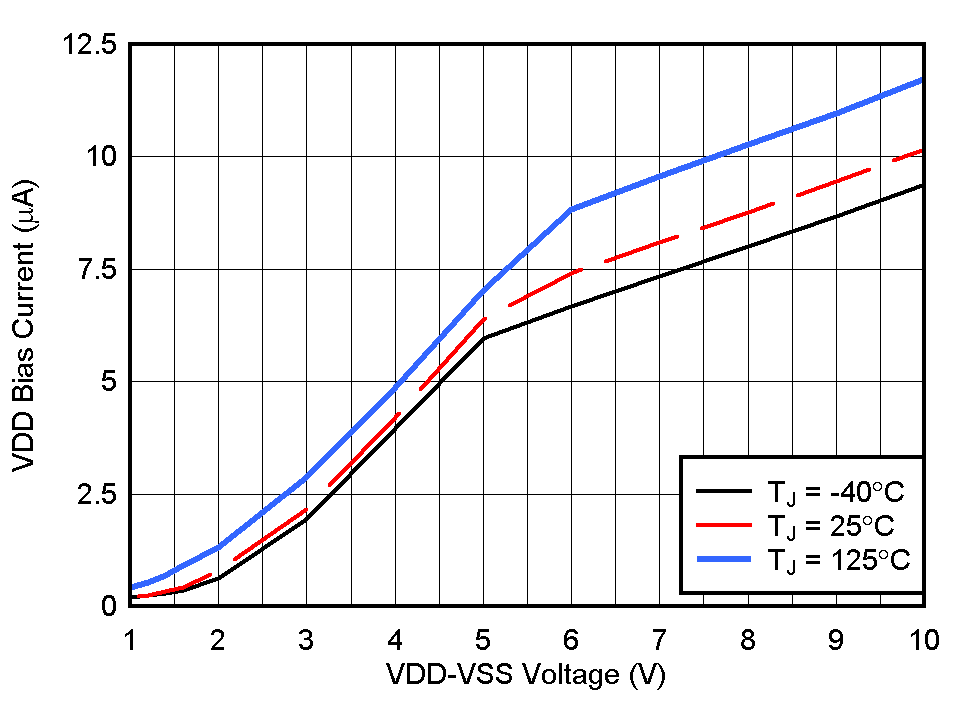 Figure 7-1 Detection Bias Current vs
Voltage
Figure 7-1 Detection Bias Current vs
Voltage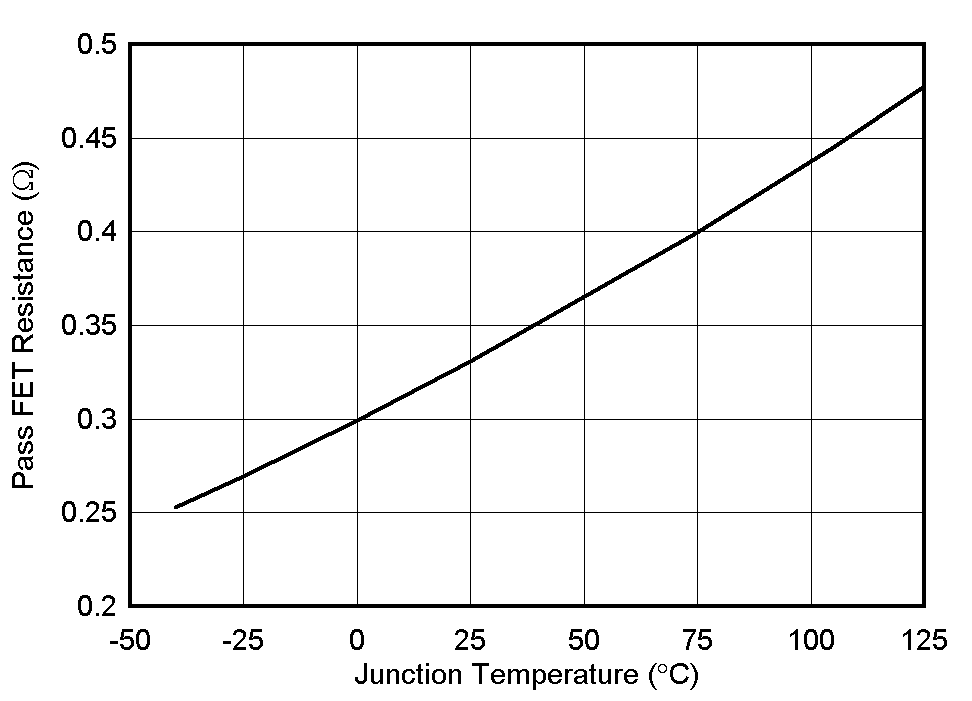 Figure 7-3 Pass FET Resistance vs
Temperature
Figure 7-3 Pass FET Resistance vs
Temperature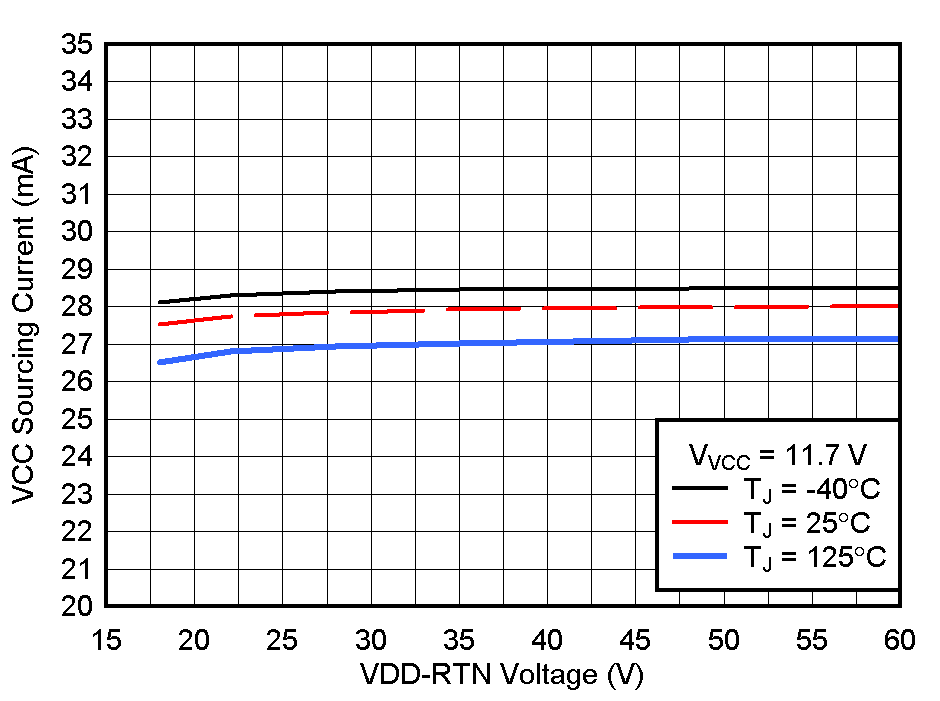 Figure 7-5 Converter Startup Current
vs VDD Input Voltage
Figure 7-5 Converter Startup Current
vs VDD Input Voltage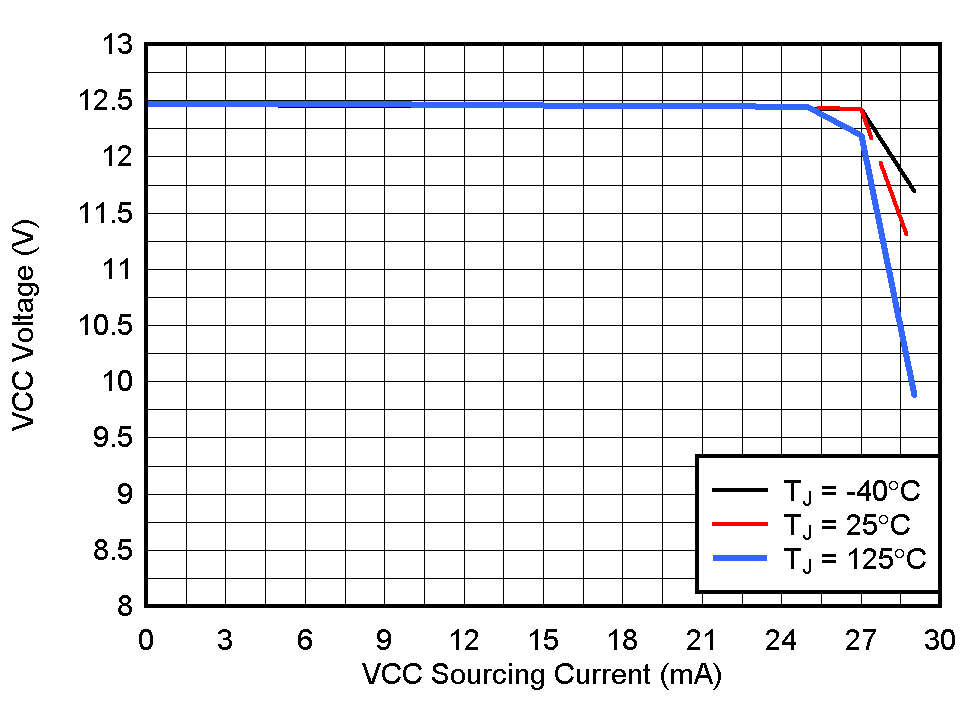 Figure 7-7 Converter Startup Voltage
vs Current
Figure 7-7 Converter Startup Voltage
vs Current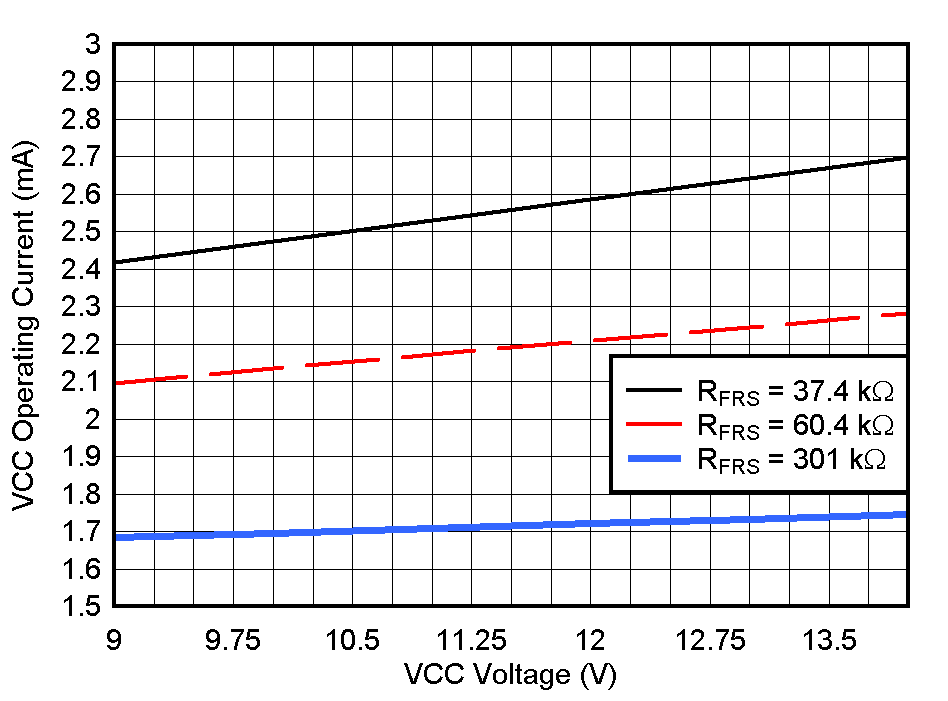 Figure 7-9 Controller Bias Current vs
Voltage
Figure 7-9 Controller Bias Current vs
Voltage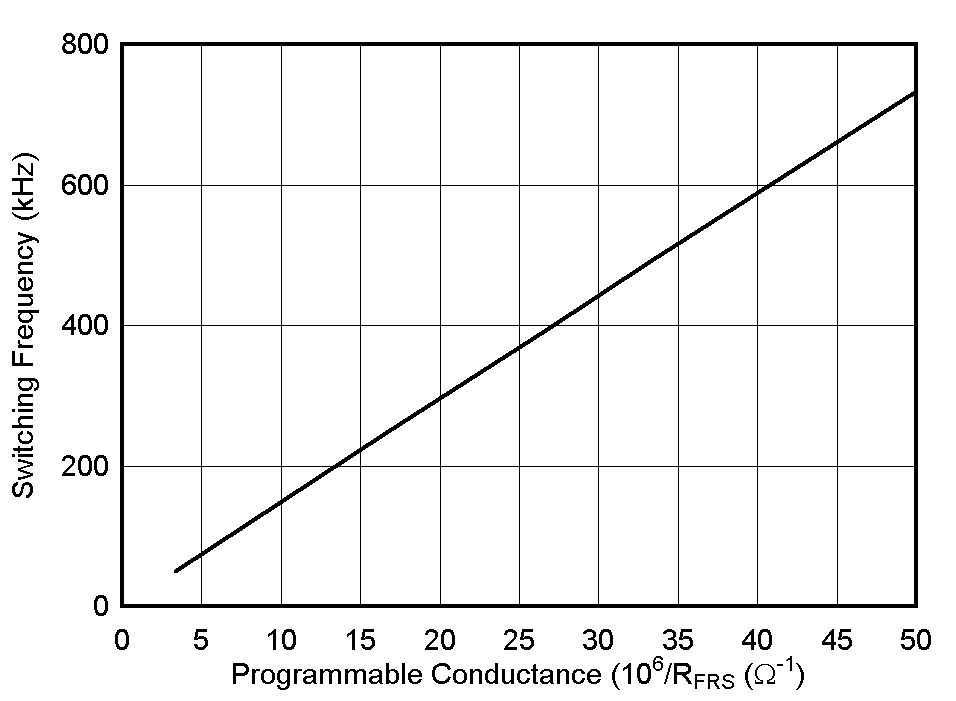 Figure 7-11 Switching Frequency vs
Programmed Resistance
Figure 7-11 Switching Frequency vs
Programmed Resistance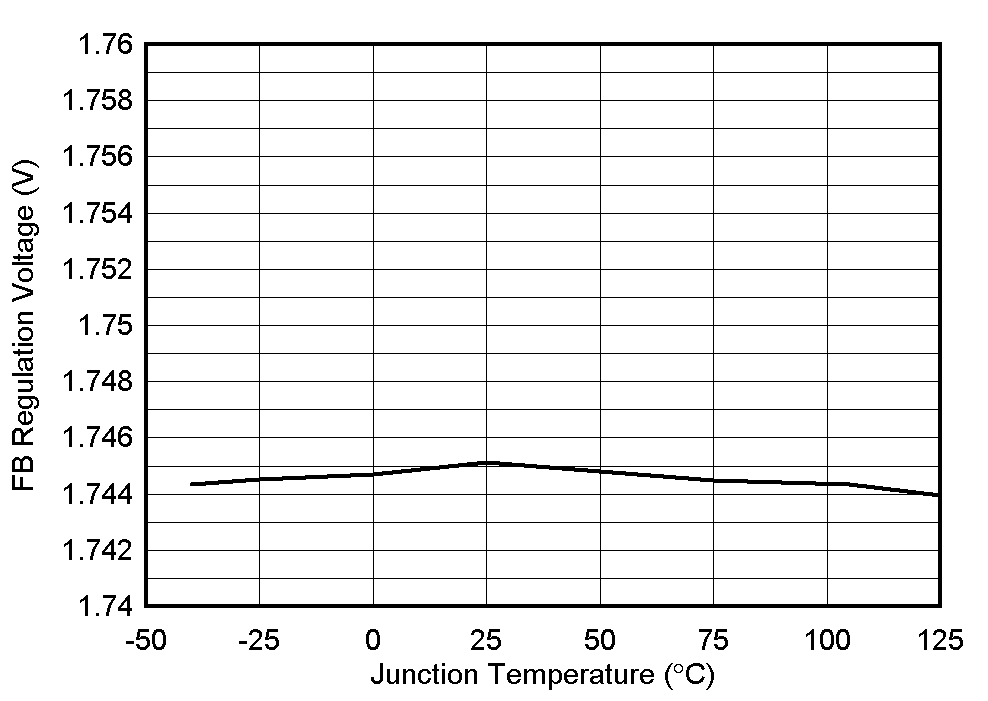 Figure 7-13 Feedback Regulation
Voltage vs Temperature
Figure 7-13 Feedback Regulation
Voltage vs Temperature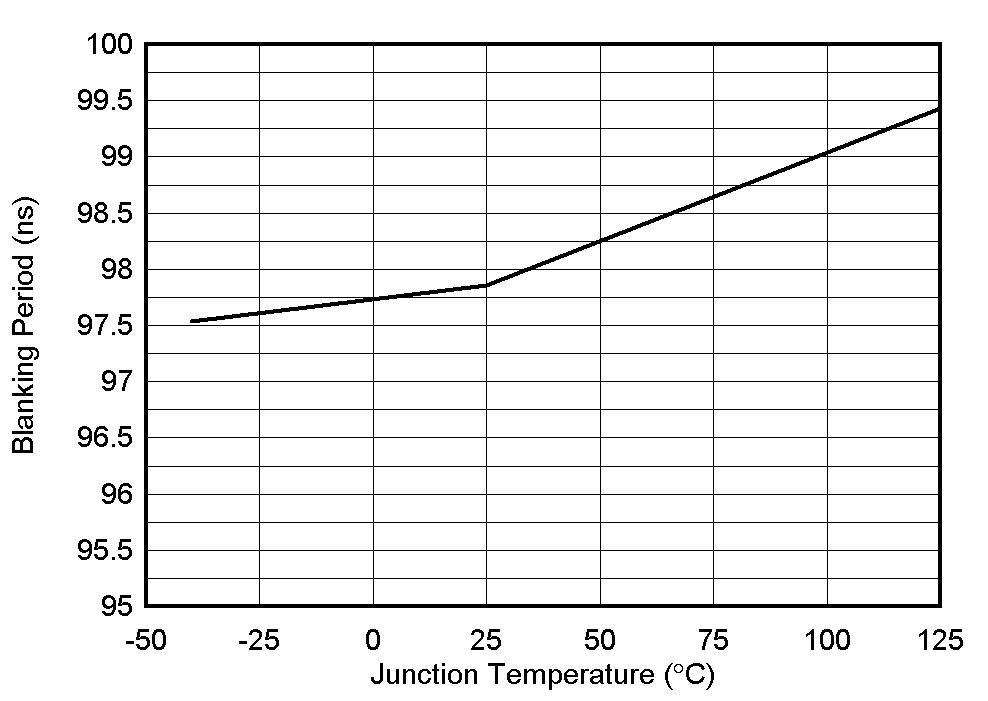 Figure 7-15 Blanking Period vs
Temperature
Figure 7-15 Blanking Period vs
Temperature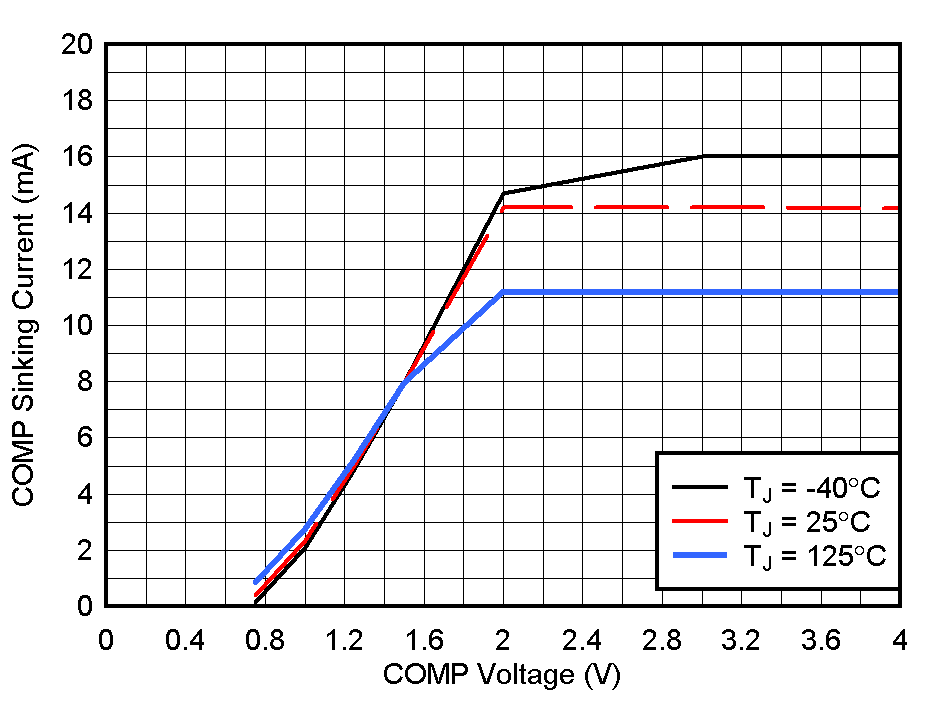 Figure 7-17 Error Amplifier Sink
Current
Figure 7-17 Error Amplifier Sink
Current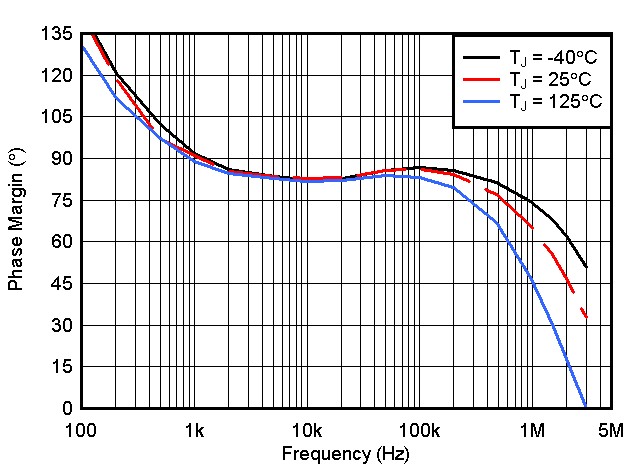 Figure 7-19 Error Amplifier Phase vs
Frequency
Figure 7-19 Error Amplifier Phase vs
Frequency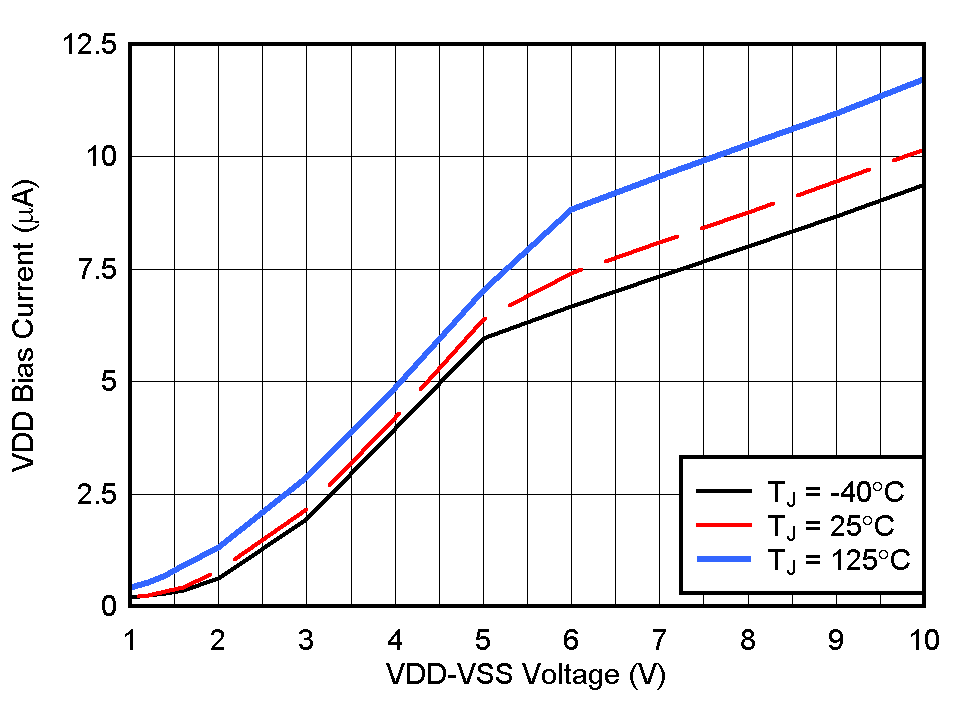 Figure 7-2 PoE Current Limit vs
Temperature
Figure 7-2 PoE Current Limit vs
Temperature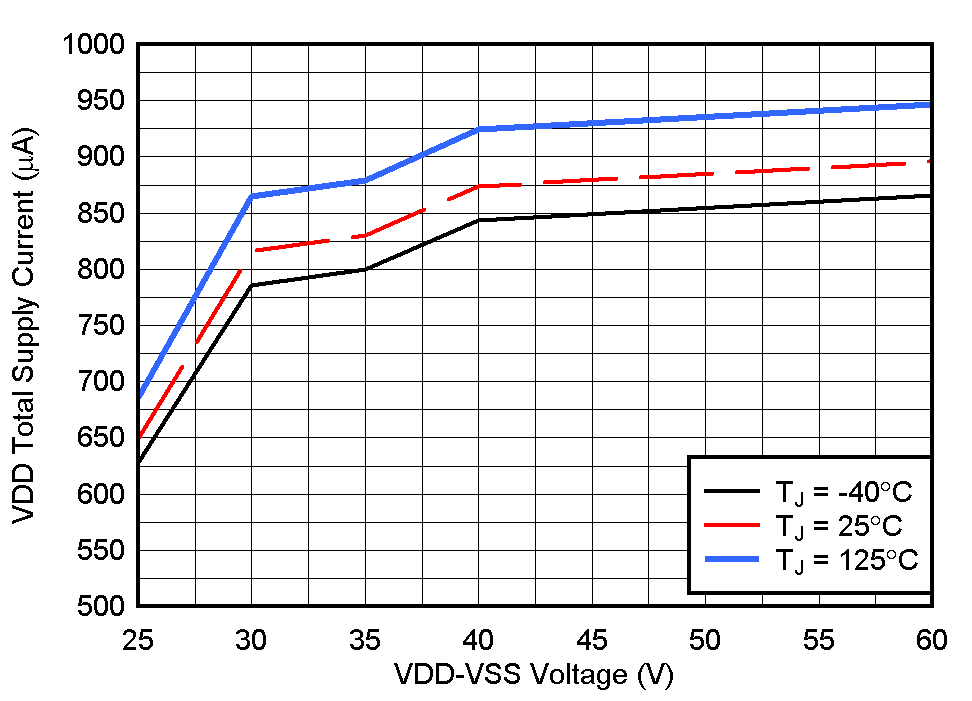 Figure 7-4 VDD Supply Current vs
Voltage
Figure 7-4 VDD Supply Current vs
Voltage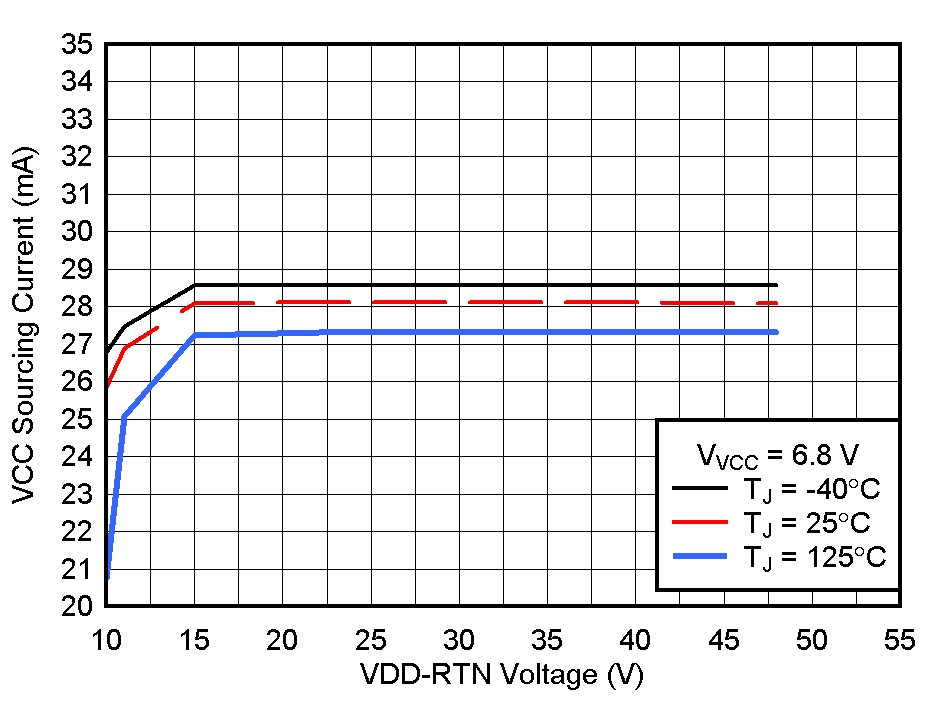 Figure 7-6 Converter Startup Current
vs VDD Input Voltage
Figure 7-6 Converter Startup Current
vs VDD Input Voltage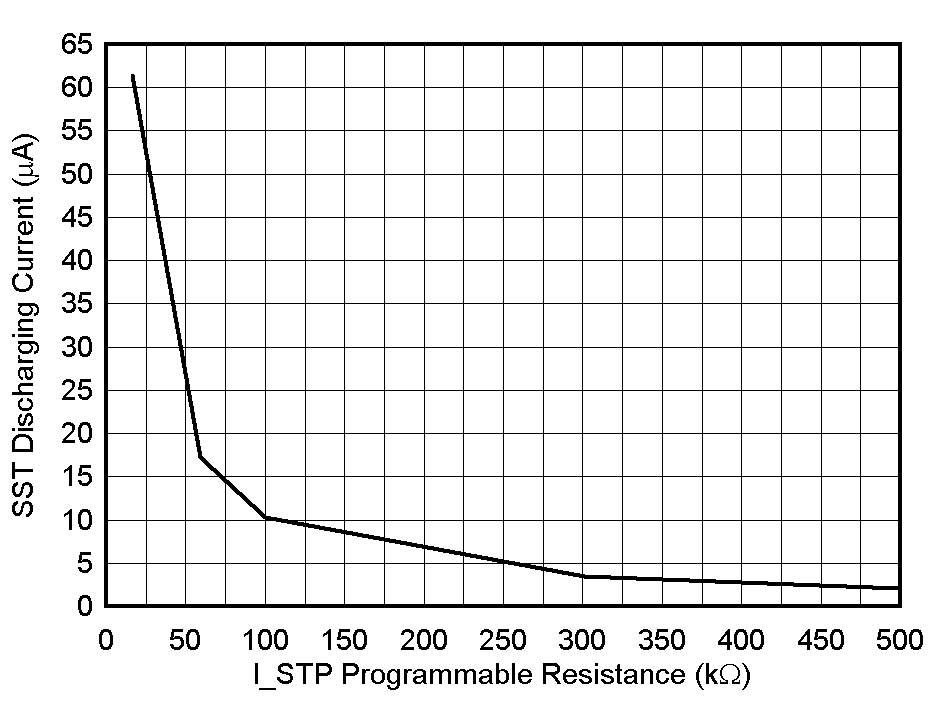 Figure 7-8 Controller SST Soft Stop
Sink Current vs Programmed Resistance
Figure 7-8 Controller SST Soft Stop
Sink Current vs Programmed Resistance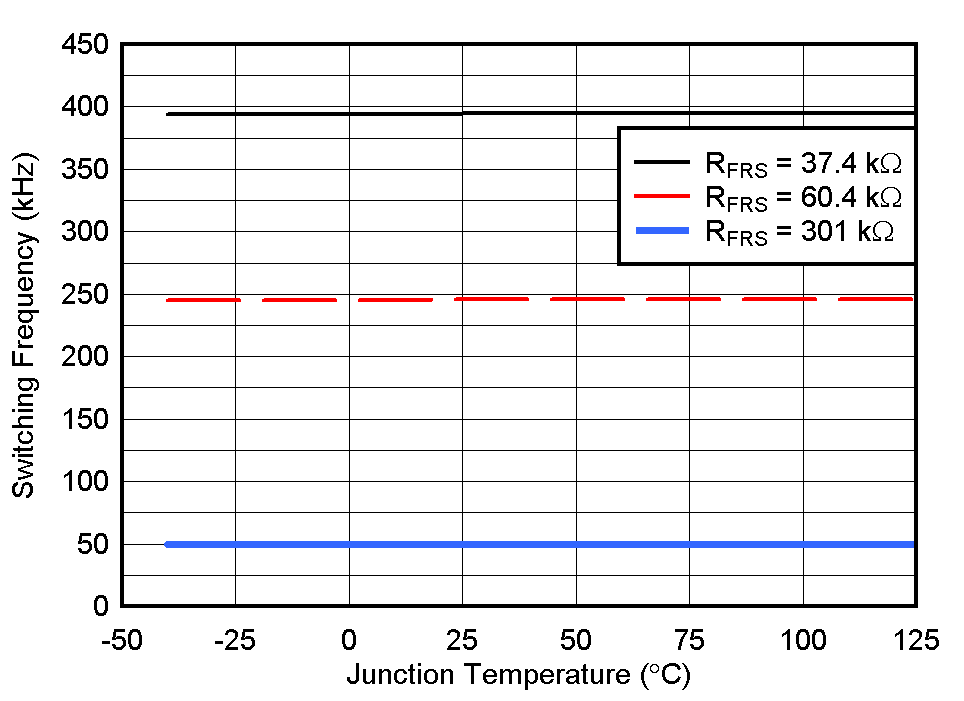 Figure 7-10 Switching Frequency vs
Temperature
Figure 7-10 Switching Frequency vs
Temperature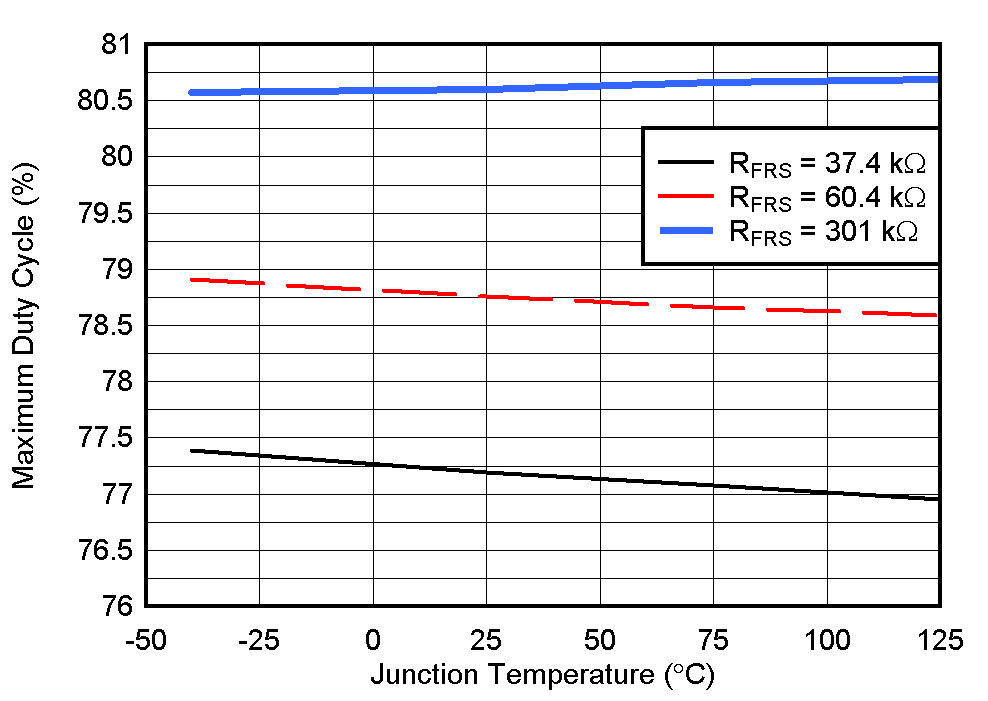 Figure 7-12 Maximum Duty Cycle vs
Temperature
Figure 7-12 Maximum Duty Cycle vs
Temperature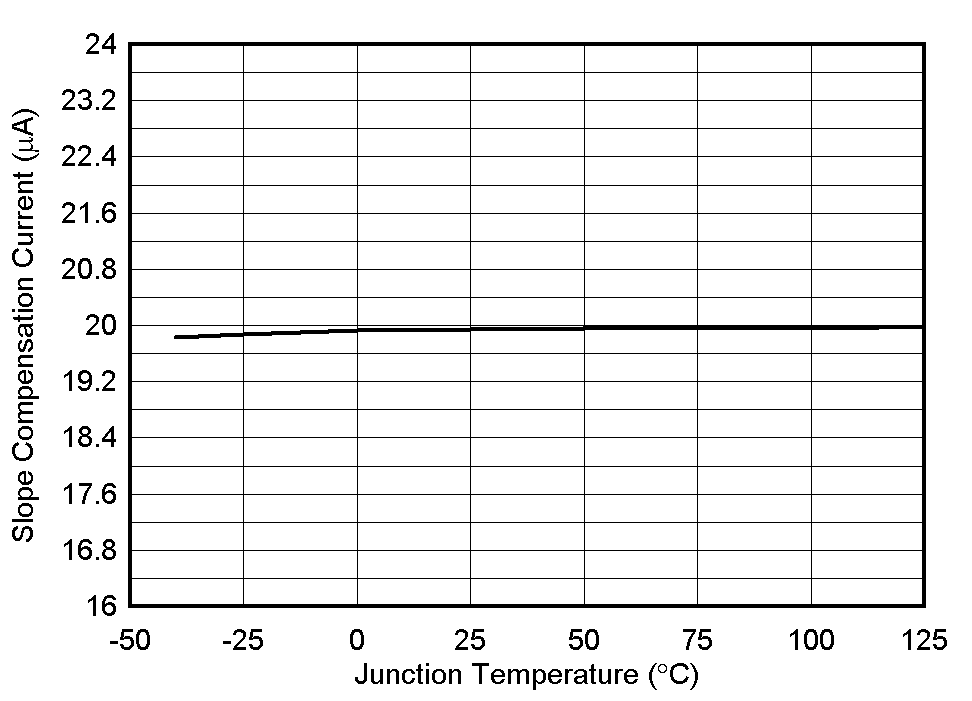 Figure 7-14 Current Slope Compensation
Current vs Temperature
Figure 7-14 Current Slope Compensation
Current vs Temperature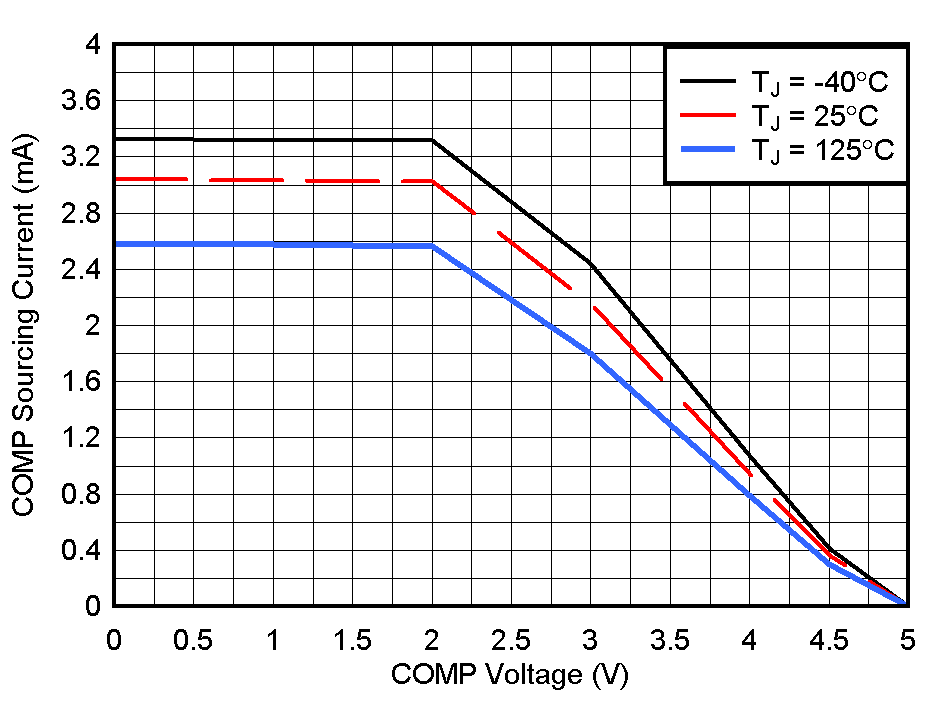 Figure 7-16 Error Amplifier Source
Current
Figure 7-16 Error Amplifier Source
Current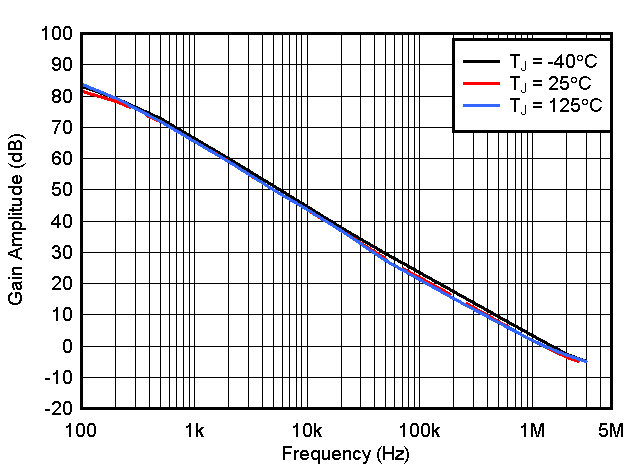 Figure 7-18 Error Amplifier Gain vs
Frequency
Figure 7-18 Error Amplifier Gain vs
Frequency